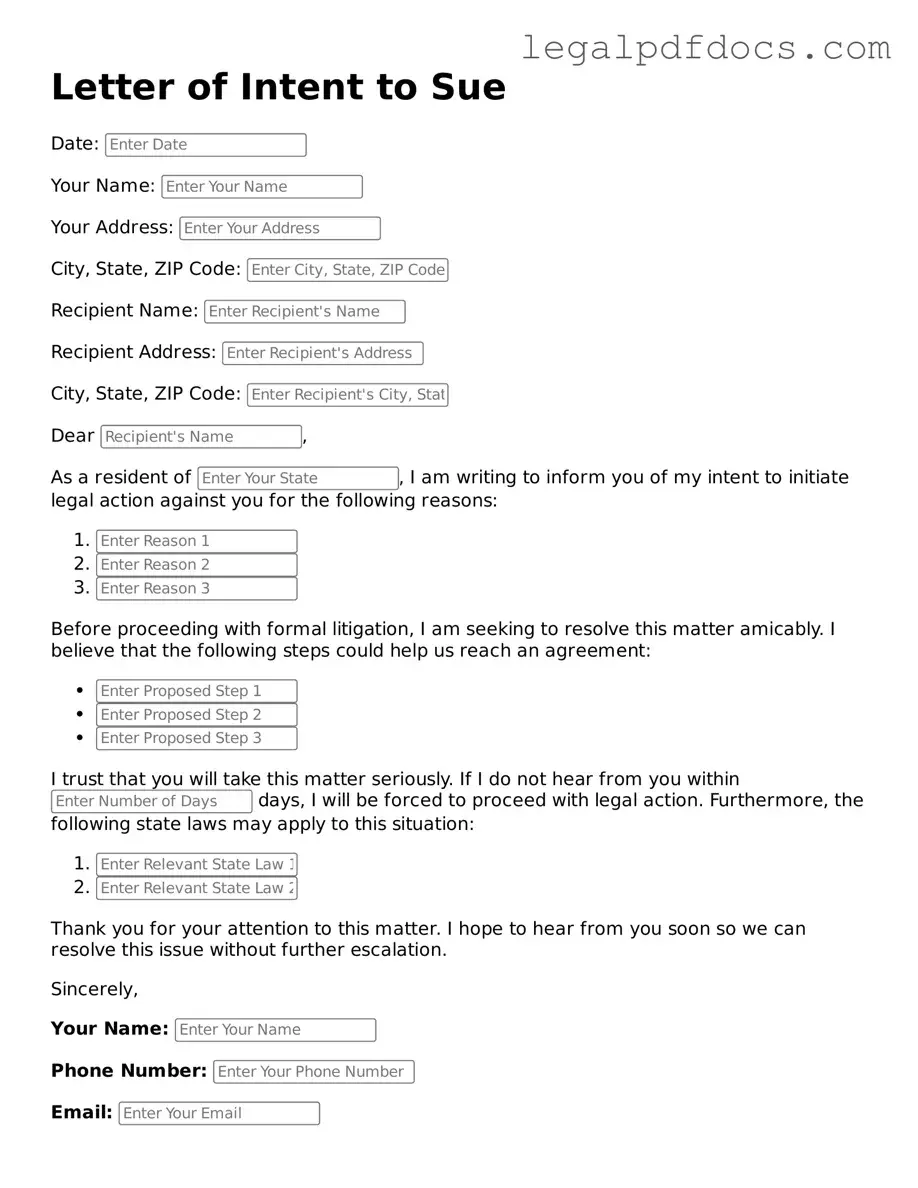Letter of Intent to Sue Template
A Letter of Intent to Sue form is a document that notifies a party of the intention to initiate legal action against them. This form serves as a formal communication, outlining the reasons for the potential lawsuit and the issues at hand. Completing this form may be a necessary step before pursuing legal remedies.
To proceed, please fill out the form by clicking the button below.
Open Letter of Intent to Sue Editor Here
